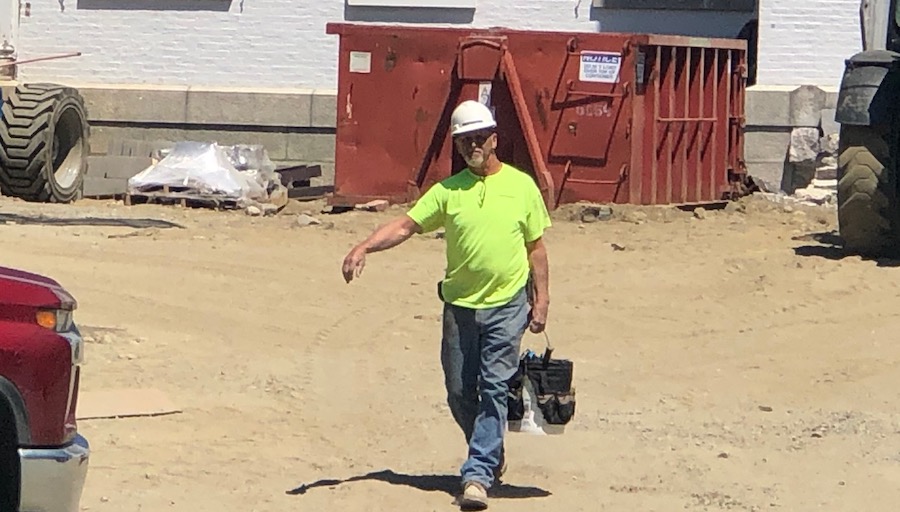Contractors are struggling to find enough skilled craft workers even as they continue to be impacted by pandemic-induced project delays and supply chain disruptions, according to a workforce survey from the Associated General Contractors of America and Autodesk. The survey results show how the COVID-19 pandemic has created constraints on the demand for work even as it limits the number of workers that contractors can hire.
Almost nine out of 10 surveyed contractors reported they are having difficulty finding craft workers. Meanwhile, 88% of the 2,136 participating decision-makers from a range of several contractor types said they are experiencing project delays and nearly all, 93%, said their businesses have been affected by rising materials prices.
For comparison, 52% of a similar-sized group of contractors said they were having a hard time finding enough craft workers in last year's survey.
"Nearly nine out of 10 firms are experiencing project delays among all respondents."
Ken Simonson, chief economist for the AGC
"Nearly nine out of 10 firms are experiencing project delays among all respondents," said Ken Simonson, chief economist for the AGC, at a Sept. 2 press conference. "75% cite delays due to longer lead times or shortages of materials while 57% cite delivery delays. 61% of firms said that their projects are being delayed because of shortages among those of their subcontractors. Delays due to the lack of approvals or inspectors or an owner's directive to halt or redesign a project were cited by 30% of contractors."
Technology adoption is again on the rise as workers continue to remain scarce. 57% of respondents in the survey said that the rate of technology adoption at their firms increased over the last 12 months.
And, "nearly 60% said that they anticipate the rate of technology adoption to further increase over the next 12 months," said Allison Scott, director of construction thought leadership at Autodesk. "So, at an organizational level, our research with the AGC also found this year that nearly half of firms adopted project management technology, and more than a quarter of respondents reported adopting tools in other categories like estimating bidding, document management, workforce management and site safety."
Ramping Up Hiring Efforts
Scott said that construction will have to look for more ways to partner with local, state and federal officials and trade groups such as AGC to meet the challenge of its workforce difficulties. She also said diverse outreach to women and minority groups is essential to the industry's future.
"Firms are driving toward a focus on trying to meet talent where they are, amping up social media presences, trying to get a peek behind the jobsite fence and giving folks a perception of what kinds of roles and skill sets are really out there for the modern construction workforce and as technology partners to this industry," she said.
Stephen Sandherr, CEO of the AGC, said that Congress and the Biden administration should work together to increase investments in career and technical education and other workforce development measures.
"It's important to note that the federal government currently spends only $1 on career training for every $6 plus into college prep," Sandherr said. "That is $120 billion a year for colleges and only $20 billion a year for career training. Despite the fact only one in three jobs requires a full college degree. This funding gap for career training is one of the main reasons so many contractors have a low opinion of the current pipeline for preparing new craft construction professionals. Boosting federal investments in career and technical education will help attract and prepare more people for high paying careers in construction."
Simonson said hiring continues to be a struggle. The Bureau of Labor Statistics' monthly job openings and labor turnover survey last month said that openings at the end of June were the highest ever for any issue of the report in 21 years.
While there can be a lot of variation in the Bureau's survey from month to month, the results "fit right in with what our respondents were telling us about," Simonson said.
Wrestling with Vaccine Mandates
Chris Carson, president/COO of Carson-Mitchell, Inc., in Springfield, Mo., said that while his company has been able to fill most of its labor needs, the subcontractor community in Missouri and Arkansas has not.
"If they can't find people, that's one problem. And if they can't find people who are mandated to be vaccinated in order to work in the place that they need to work, it presents a whole other problem," he said.
"There's plenty of work here. Staffing is an issue, but the supply issues are probably the one that's killing us the most possibly because we're in the middle of the country, but we simply can't get the suppliers and manufacturers to get us things on time and it's getting better, but we've got a long way to go."
Sandherr pointed out that project owners such as schools and hospitals that have set their own vaccination mandates create more challenges that the general contractor has to deal with.
"In the situation where you're the general contractor on a hospital, and you employ or contract a series of specialty trade subcontractors to perform work on that project, you have suppliers coming into the project. You have building inspectors coming onto the project. And with these vaccination mandates that come from public and private project owners, it basically sets the general contractor up to be the policeman ... to make sure everybody who steps on that site has had, or has been vaccinated."
He added: "You can't compel your subcontractors to provide information on that or your suppliers and you can't control if a city building inspector wants to enter that site."
Both Carson and Brett Strassel, vice president of operations at Hedrick Brothers Construction in West Palm Beach, Fla., said they have no plans to mandate vaccinations for their companies at this time.
"We're letting everybody handle their personal health on an individual basis with their primary care physician and their family," Carson said. "We are not going to make anything mandatory other than following the CDC guidelines, OSHA and AGC to have a healthy and safe work environment."
Sandherr said AGC did not expect to change its guidance to member contractors that encourages vaccination but still leaves the choice up to the individual. Carson said that one metric moving more workers toward getting vaccinated against COVID-19 is the potential to be away from the site and lose pay because of the time off. Construction vaccination rates industry-wide continue to hover around 50%, Simonson said.
Supply Chain Woes
Carson and Stressel both said materials procurement was still the biggest issue facing them.
"We're a big block builder down here and never in my 25 years in the field have I run a problem getting the delivery of block that afternoon or the next morning. Now, we're routinely looking at 30 days, which is just alarming," Strassel said.
He adds that Hedrick Brothers has also seen "tremendous delays" on metal- and steel-based products, adding: "That's our number one issue down here by far is getting things moving forward."
Carson said he does not foresee the supply chain and logistics challenges plaguing contractors changing very soon.





